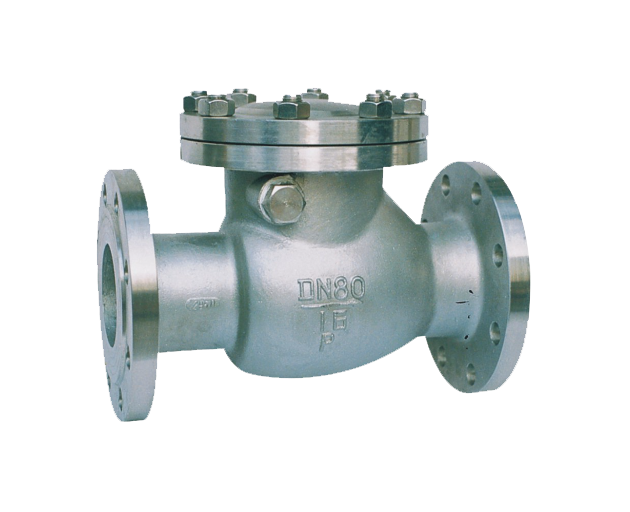When installing flanged check valves, the following precautions
should be taken to ensure their proper operation and long-term use:

1. Preparation
before Installation
-
Inspect the
valve: Ensure that the valve has not been damaged during transportation and
that there are no foreign objects inside the valve body.
-
Clean the
pipeline: Clean debris such as weld slag and rust from
inside the pipeline to prevent them from entering the valve body.
-
Verify
parameters: Check the pressure, temperature, material, and other parameters on
the valve's nameplate to ensure they meet the requirements of the working
conditions.
2. Installation
Position and Direction
-
Flow
direction marking: Ensure that the arrow marking on the valve is consistent
with the flow direction of the medium in the pipeline.
-
Vertical
installation: Check valves are typically installed vertically, with the valve
disc free to open and close. When installed horizontally, ensure that the valve
disc can move freely.
3. Flange
Connection
-
Align flanges:
Ensure that the flanges of the pipeline and valve are aligned to avoid offset or stress concentration.
-
Flange
gasket: Select the appropriate gasket material and place it correctly between
the flanges to prevent leakage.
-
Bolt
tightening: Tighten the flange bolts uniformly in a
diagonal sequence, gradually increasing the force to ensure uniform stress on
the flange and prevent deformation.
4. Avoid Stress
-
Pipeline
support: Install
appropriate supports before and after the valve to prevent the weight and
stress of the pipeline from concentrating on the valve.
-
Reduce
vibration: In pipeline systems with significant vibration, take measures to
reduce vibration transmission to the valve and extend its lifespan.
5. Testing and
Commissioning
-
Seal test:
Conduct hydrostatic or pneumatic testing after installation to check the
sealing performance of the flange connections and inside the valve.
-
Function
test: Confirm that the check valve can open and close normally during medium
flow and stoppage.
6. Regular
Maintenance
-
Regular
inspection: Regularly inspect the tightness and sealing performance of the
flange connections to prevent loosening and leakage.
-
Clean the
valve body: Clean the inside of the valve body when necessary to prevent debris
accumulation that could affect valve performance.
-
Lubricate
components: For check valves requiring lubrication, regularly inspect and add
lubricant to ensure flexible valve disc movement.
7. Special
Working Condition Considerations
-
High
temperature and pressure: In high-temperature and high-pressure conditions,
select appropriate gasket and bolt materials to prevent leakage caused by
thermal expansion and contraction or stress concentration.
-
Corrosive
media: For corrosive media, choose valves made of corrosion-resistant materials
and implement corrosion prevention measures.
8. Environmental
Requirements
-
Protective
measures: When installing in outdoor or corrosive environments, take protective
measures for the valve, such as applying anticorrosive paint or installing
protective covers.
-
Temperature
control: In extreme temperature environments, take insulation or cooling
measures to prevent the valve from failing due to temperature effects.
